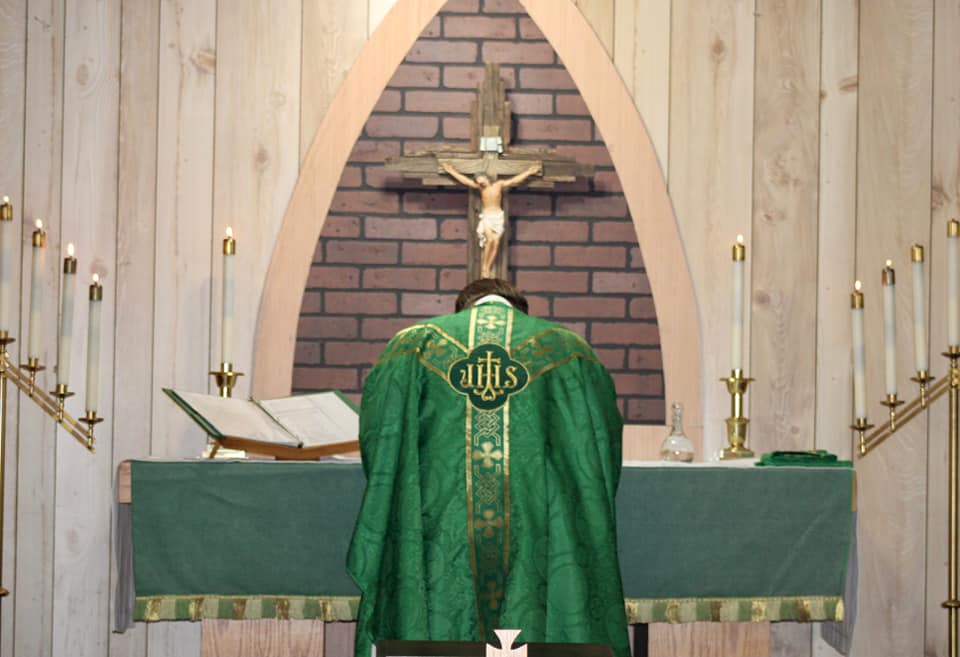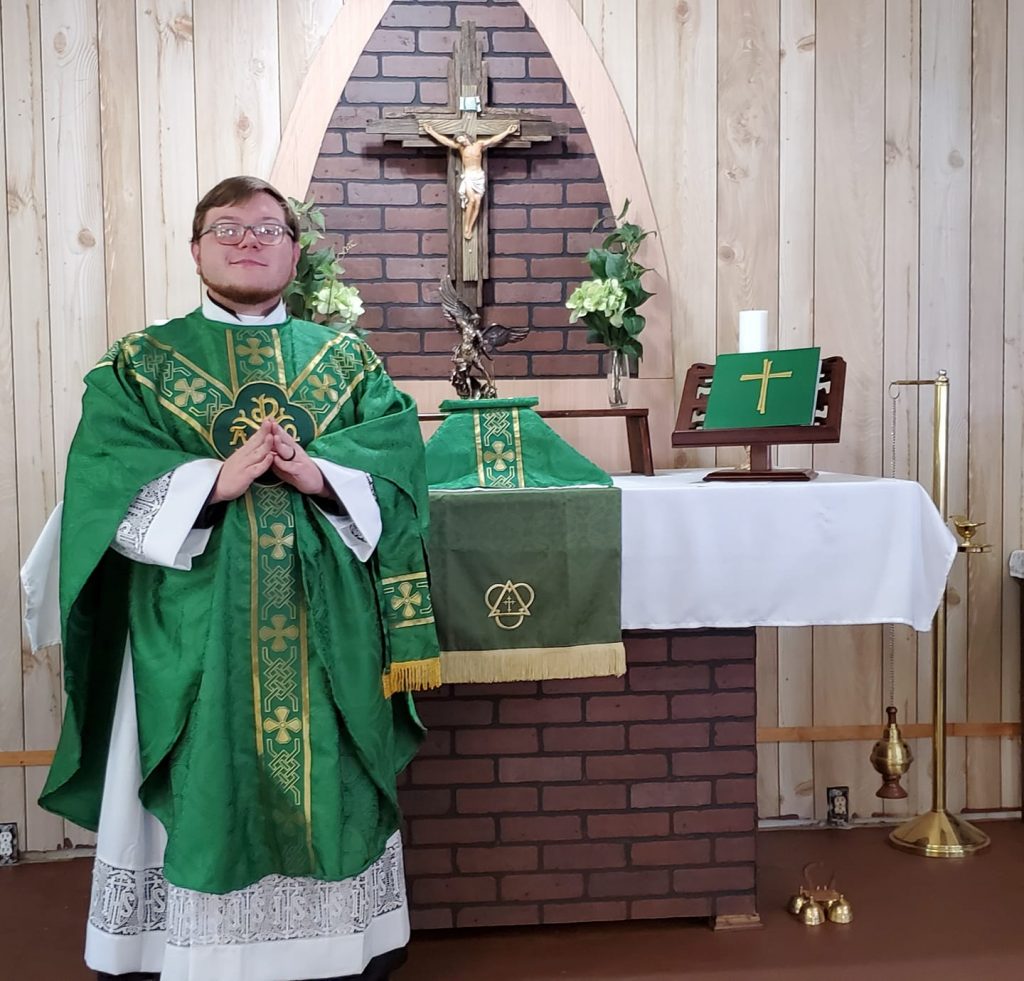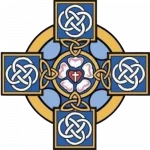Worship Practices
When you come to a service at St. Patrick Lutheran, you might not understand the reasons behind everything you see and hear at first. That’s okay! Watch and observe. Read and consider the words of the songs and the hymns. And listen, especially to the Scripture readings and the sermon.

St. Patrick is a liturgical church.
Here’s a brief explanation of what that means:
Christian worship was liturgical long before the Lutheran Reformation. It actually mimics the ancient worship of God’s people in the Jewish synagogue. It gives Christians a standard structure of worship taken from Scripture. Liturgical worship is, simply put, using God’s own words to speak to Him; God gives us His Word, and we respond back.
Liturgical worship has as its goal to preach and teach the saving story of Christ from start to finish, which includes the Law (exposing our desperate neediness before God because of our sin) and the Gospel (God’s saving acts on our behalf in Christ). Even our hymns have the purpose of proclaiming God’s salvation history and teaching the truths of the Christian faith.
The Divine Service follows the life of Christ. In the Gloria in Excelsis, we witness Jesus’ birth. In the readings, Creed, and sermon, we follow Jesus during His earthly ministry. In the Sanctus, we stand with the crowds of Palm Sunday. In the Words of Institution, we sit with the disciples in the upper room on Maundy Thursday. In the Angus Dei, we witness Good Friday. In the distribution of Communion, we see, touch, and taste our resurrected Lord. At the Benediction, we see Him ascend into heaven. Because the Service is the story of Jesus’ life, it is the story of our salvation.
The Liturgy
Liturgical worship is historically made up of three parts: the Preparatory Service, the Service of the Word, and the Service of the Sacraments.
The Preparatory Service
This begins with an opening hymn which sets the tone for the day.
Then follows the Invocation — the pastor stands at the foot of the altar steps and speaks the Trinitarian formula (“In the name of the Father, and of the Son, and of the Holy Ghost”) as the Sign of the Cross is made ✙.
After this comes the Confession of Sins — the congregation humbly confesses before God their sinfulness and pleads for His mercy and grace for the sake of Christ’s holy, innocent, bitter sufferings and death.
The Service of the Word
The Introit marks the actual beginning of the Service of the Day. At this point, the pastor approaches the altar. It strikes the keynote theme of the entire Service, recognizing the glory of God and announcing God’s grace using relevant verses, usually from the Psalms.
Having received the forgiveness of sins through holy Absolution, the congregation breaks into spiritual song, singing the Gloria Patri (“Glory be to the Father”), the Kyrie (“Lord, Have Mercy”), and the Gloria in Excelsis (“Glory be to God on High”).
This is followed by the Salutation and the Collect (Prayer) for the Day.
The Service of the Word is so-called because it emphasizes the reading and exposition of Scripture. The most attention is given to the Epistle and Gospel lessons from the New Testament, as well as the Sermon prepared by the pastor on a chosen text.
The congregation also recites one of the three Ecumenical Creeds (The Apostle’s, Nicene, or Athanasian).
The Service of the Sacrament
The Preface begins the service of Holy Communion. It begins with a simple but powerful dialogue between the pastor and the congregation, which unites the whole body of believers in reverence, adoration, joy, and thanksgiving in anticipation of the Sacrament. This is followed by the Common Preface, which begins “It is truly meet, right and salutary” and ends with “Therefore with angels and archangels, and with all the company of heaven” thus uniting the Church on earth with the Church Triumphant.
Then the Sanctus (“Holy, holy, holy”) is sung, a spiritual song based on the words of Isaiah chapter 6. The song of the heavenly hosts is joined with the song of Palm Sunday (“Blessed is He”) to create one of the most comforting and sublime portions of the liturgy. We stand in heaven before the Holy Lord with angels and archangels and all the saints to give thanks to God Himself. Yet we are not afraid; just as Christ humbly rode forth on Palm Sunday to win salvation, so now He rides forth in humble bread and wine to give us salvation.
Following the institution of Christ (“This do”) the pastor Consecrates, or blesses, the earthly elements of bread and wine for use in the Sacrament. The words of Christ ensure the Real Presence of His true body and true blood, under the bread and wine, for us Christians to eat and to drink.
*Since the Bible calls the Lord’s Supper an expression of common faith, we only invite to the Lord’s Table those who have studied and confessed their agreement with the teachings of our church. This practice, called “Closed Communion,” is the historical practice of the Christian Church, although many churches no longer practice it.
The elements are then Distributed to those who are communicant members as they come up to receive.
After the post-communion Canticle and Collect, the pastor blesses the congregation with the Aaronic Benediction (from Numbers 6:24)
We conclude the Divine Service with a triple Amen, which expresses our firm faith in the forgiveness of sins by God’s grace through Jesus Christ as heard and experienced in the Word and Sacrament of the Divine Service just ended.
In addition to the service itself, you’ll notice how our pastor is dressed during the service. He wears a white robe called an “alb” and a stole (in the color of the season of the Church Year) as a reminder that he does not speak his own thoughts or opinions during the service, but instead, he is representing Christ as a called and ordained ambassador. During the Service of the Sacrament, the pastor also vests in a chasuble in order to emphasize the glory and majesty of Christ, who comes and gives His own body and blood to His people in the Sacrament.
Our pastor is more than willing to explain our worship practices in more detail, and to study the Bible with anyone who wishes to know more about the teachings of the Lutheran Church. An introductory study on the teachings of Scripture and the Lutheran Church is offered throughout the year to those who wish to learn, to review, or to explore the possibility of membership in our church.


